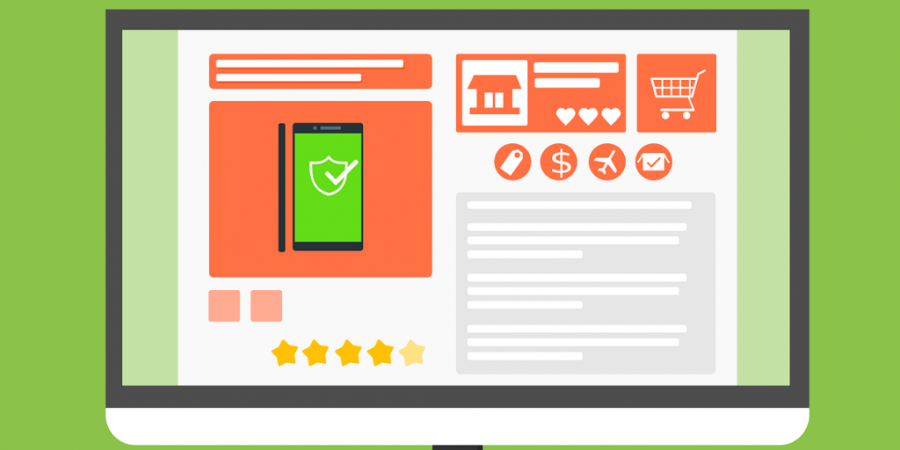Is Website Speed Important for Converting Visitors?
Editor note: This article has been updated to provide more in-depth information and accuracy as of 2018
Is Website Speed Important for Converting Visitors?
Google has been using website load speed as a ranking factor since April 2010 . Since then, businesses have needed to focus on their website and pay attention to optimisation.
Whilst page load speed affects rankings, does this then correlate to conversions?
Your Site Load Speed Is Your First Impression
According to Neil Patel's research ' 47% of consumers expect a web page to load in 2 seconds or less '. This expectation not only determines whether or not the user stays on your website, but it also creates a perception of your brand/website. A negative perception.
It can be very difficult to overlook slow load times, especially when they are frequently occurring whilst you browse different web pages.
As users, we perceive instantaneous load times as a sign of professionalism. If we load a website in 0.5 seconds and each page loads instantly, we get the perception that they have invested large amounts of time and resources in optimising their website. It also creates a sense of trust and reassurance.
If the website loads instantly, it has to be secure. right?
Your Load Speed Impacts Your Rankings
As previously stated, Google introduced website load speed as a ranking factor in 2010. Whilst your websites positioning may not directly impact your conversions, it does impact your ability to acquire new visitors.
Looking at conversions as a form of the law of averages for sales, more commonly shortened to 'more equals more'. In this instance, if you are able to acquire more opportunities to convert, you are likely to convert more.
If you are ranking low in Google searches for your main keyword, you might find that you will be receiving far less traffic than your competitor.
Failing to optimise your site load speed could see your website falling in the rankings. Whilst site load speed isn't the only factor that impacts your ranking potential, it could have a negative impact if it's not something you target directly.
Your Mobile Site Load Speed Is Also a Ranking Factor
As of July 2018, mobile site load speed has also become a ranking factor . However, mobile site speed is analysed slightly differently in terms of priority.
Mobile websites that are impacted by this change are those that are within the lower bracket. The sites that are the slowest.
If your mobile website is loading somewhat slow, but still loads within 4 seconds, it's unlikely that you'll be affected by this change. With that being said, ignoring your mobile load speed could have problems for your conversions.
"73% of mobile internet users say that they’ve encountered a website that was too slow to load."
If you encounter a website, mobile or desktop, that is too slow to load, what do you do? Try a different website.
This typically applies any and all industries, regardless of what you're looking for. The exception to this is if you need to access a certain website and it is currently unavailable.
Slow Site Speed Does Directly Affect Your Conversions
Neil Patel also found "A 1-second delay in page response can result in a 7% reduction in conversions". Your conversions could be affected more if your average load speed is significantly longer than 1 second.
Similarly, you need to put yourself in your customer's shoes.
If you remove caching and then browse your website, where are the key points where load speed becomes a problem? Maybe a gallery page doesn't load for more than 5 seconds. Maybe some of your assets have trouble loading or some pages may not load at all.
Once you understand the pain points your visitors are facing, you can work to resolving them. After all, if your customer has found something they would like to purchase but it doesn't load, they are going to boycott their purchase and seek a solution elsewhere.
Solutions
The first step to solving a slow load speed is to first identify where the problem lies.
A common cause for a slower load speed on e-commerce is within individual products. If you have multiple customisation options like clothing size, colour, fabric type, brand etc all on the same page, it is going to take significant resources to load.
Sometimes these issues can be resolved with improved hosting. However, If all your products follow the same suit, it won't be long before it becomes an issue.
Images
Ensuring your images are web friendly is key. If your header image is a high-resolution 400mb image, it is going to cause problems. Especially when you have multiple images on a page.
To fix this, you will need to resize/compress these images. Ideally, you will want them below or close to 100kb. You can alter these images yourself through various online image compression sites.
Alternatively, if you have these images available, you can export these at a lower quality percentage through Photoshop.

Products
Following from the topic of E-commerce websites - If you have multiple different customisation options that aren't necessary - look to remove them.
Whilst this may not be an applicable solution for some businesses, it may be for others. Especially if you have hundreds upon hundreds of products.
For your top selection, it may be necessary to keep the number of options you have. For other, less purchased items, evaluate the purchasing habits. Are your customers selecting varied options or are they all similar if not the same?
If the selection is the same then you may be able to remove the options entirely.
There are also many different options and paths you can take to reduce the strain on your server. If your website is loading slowly and you believe this may be having a negative impact on your rankings and conversions, we recommend consulting with your web developer. They will help you analyse and audit the site and find areas that need improvement.
If you do not have a developer on hand, contact at admin@devmac.co.uk and speak to us about our support package. We can work with you to optimise your website and reduce the load time.






